- Home
- Tom Clancy
Carrier: A Guided Tour of an Aircraft Carrier Page 19
Carrier: A Guided Tour of an Aircraft Carrier Read online
Page 19
Moving forward again, we find more ready rooms, as well as dozens of staterooms for the air wing personnel and ship’s officers. Most of these are two-man units, and are actually quite pleasant to live in (as I did for several days). The racks are doubled-decked, and somewhat larger than those of the enlisted personnel. There is a fair amount of personal stowage space, as well as a small fold-down desk. Each officer has a safe for classified materials and personal items, as well as a small sink and mirror. Though a few staterooms have shared heads and shower facilities, most officers use one of the many community head/shower spaces around the ship. Roommates also usually go in together on electronic items like a “boom box” stereo, television, and VCR; and there is a box for plugging these into the ship’s cable television and radio network, as well as the commercial feeds from the Challenge Athena system.
Forward of the living spaces, there is a truly wonderful place, called the “Dirty Shirt” galley and wardroom area. This is the only officers’ wardroom aboard where wearing flight suits and flight deck work gear is “acceptable.” While the other wardrooms belong to the ship, the “Dirty Shirt” wardroom “belongs” to the air wing, which means that aviator traditions apply here. “Dirty Shirt” menus tend to be more informal, and talking “shop” is allowable. Each squadron has its own table, and etiquette dictates that you ask permission to join anyone who is already there. Still, more often than not, you will find a warm smile and an invitation to join the conversation. In the “Dirty Shirt” mess there is also is a neat, little-known secret: the “dog” machine—the nickname for the soft-serve ice cream dispenser, which is kept going around the clock.41 It is a wonderful diversion from the sometimes-spartan life aboard ship; and the “Dirty Shirt’s” dog machine is usually the best on the ship.
Heading aft, about two-thirds of the way back, we come to a cross-corridor intersection with what looks like a small store on each corner. These are the various squadron “shops” for the flying units of the air wing, with one such space for every squadron in the air wing. Here all the data on the readiness, flying and maintenance status, and ordinance/stores loadouts of every squadron’s aircraft is managed. Here also is where the Command Master Chief (CMC) for each squadron works. The CMC is the senior enlisted sailor in each squadron, and functions as the shop foreman who keeps the aircraft ready to fly and fight. The CMC also functions as an advisor and advocate for the enlisted personnel of the squadron to the unit’s officers. Along with the entire corps of petty officers, the CMCs are the institutional “glue” of the Navy, and a good officer rapidly learns this fact. Finally, they are the keepers of the “Squadron Store.” This sells coffee mugs, T-shirts, patches, and stickers of the squadron logo (called “zaps”). If you get aboard a carrier, be sure to pick up a few of these, since the money always goes into the squadron relief fund. I always do.
Returning aft to the island ladder well, we head down four more levels to the Second Deck (deck levels above the hangar or main deck have numbers—01, 02, etc.—while decks below are spelled out). Here most of the crew (officers and enlisted personnel) take their meals. Both have galley and eating facilities here, and something like fifteen thousand meals a day are served on this deck alone. The enlisted personnel eat cafeteria-style in three large spaces amidships that can hold about five hundred personnel at a time. The officers’ wardroom (called “Number Three”) is farther aft, and is essentially a sit-down-style restaurant, though there’s a buffet line if you desire. Always open, Wardroom Three is the social center of the ship. Here the officers can come together for a few minutes and share news of the day with their shipmates. Coffee, “bug juice” (the Navy version of “Kool Aid”), and nacho machines are always powered up, and you can usually beg a meal from the mess stewards if you look as though you’ve worked hard enough. There even is what is jokingly known as the “nuclear-powered cappuccino machine,” which dispenses a passable cup of that delicious brew.
Surrounding the officers’ wardroom on the Second Deck are the state-rooms for most of the ship’s senior officers and department heads. Like the flag quarters on the 02 level, these are very pleasant, with private offices and head/shower facilities. Also like flag quarters, they are used very little since there is very little time for sleep and relaxation while aboard a nuclear supercarrier. Aft of the wardroom are more enlisted quarters. These are much like the ones we’ve already visited, except that flight deck sounds are muffled by the mass of the ship; and you’ll probably hear and feel instead the ship’s engineering plant. At high speeds (over twenty-five knots), when the hull begins to resonate, the background buzz can be annoying. Another annoyance is the heat on the lower decks when the ship passes through warm water like the Gulf Stream or Persian Gulf. Things can get downright steamy under some conditions.
The main control panel of the pump room aboard the carrier Harry S. Truman (CVN-75). This panel controls the main pumps for the entire ship, and is located between the magazines at the bottom of the vessel.
JOHN D. GRESHAM
Dropping down another ladder, you come upon the machinery spaces on the Third Deck, where most of the systems that keep the ship “alive” are contained. Here and on the deck below are machine shops, electrical switchboards and emergency diesel generators, the ship’s laundry, medical and dental facilities, and the air-conditioning plant. Also on the Third Deck is the ship’s store, the post office (a surprisingly large facility), and the newly installed banks of satellite phones. These allow sailors to call home from anywhere in the world for about a dollar a minute, and make a real difference in the lives of the crew.
Below the Fourth Deck are the heavily protected and restricted spaces dedicated to the nuclear reactors, propulsion machinery, ammunition magazines, and pump rooms. Surrounded by a double hull with massive voids (specially designed buffer zones to absorb explosions) as protection against damage, these are the safest and most secure areas of the ship. Due to the security restrictions placed upon the Navy by the Department of Energy and the Director of Naval Reactors (NAVSEA 08), I’m not able to describe their layout or equipment.42 I can say, however, that the two Westinghouse A4W reactors provide enough saturated steam to run the ship at thirty-plus knots while leaving enough electricity to power all the ship’s other systems com-fortably.The four General Electric steam turbines put out 280,000 shp to four shafts, and are highly agile at starting and stopping.
With the tour at an end, we drag our weary bones and joints up to the hangar deck, and walk over to the accommodation ladder back to the dock. By now you have a pretty good idea of the layout of today’s Nimitz-class carriers. However, the four-decade production run of this design is starting to wind down, and new ideas are beginning to be put forth for a new generation of flattop. Read on, and I’ll try and give you some ideas about what they will look like.
The Future: CVN-77 and CVX-78
The Nimitz-class carriers are as capable as their designers and builders could manage back in the late 1960’s, representing an almost optimum mix of capabilities for operations during the Cold War. Yet SCB-102 is a design in its third decade of continuous production, the Cold War is now history, and it is time to think about a replacement after the Ronald Reagan is launched in a few years. That is exactly what the Navy is doing. The U.S. Navy will always have the mission of projecting forward presence with a regular cycle of carrier rotations. At the same time, the Navy also foresees dealing more frequently with irregular, unpredictable situations. And finally, there is the necessary requirement to keep costs of building, operating, and maintaining carriers reasonable.
Question: How can the Navy do all that?
Answer: Accept the fact that is it time for a new direction in flattop design and construction.
To do this, NNS founded a carrier “Skunk Works” called the Carrier Innovation Center, based a stone’s throw from Dry Dock 12 at Newport News.44 Here the NNS design engineers are studying ways to build carriers that will be more suited to the operations the post-Cold War w
ill bring. Working in concert with a number of other corporate partners, as well as NAVSEA, NNS has helped the Navy form a two-step plan for taking carrier construction and sea-based Naval aviation into the 21st century.
Phase one of the plan involves the building of one additional Nimitz-class carrier after the USS Ronald Reagan (CVN-76), which is now under construction. This unnamed carrier, known today as CVN-77, will be a Nimitz only under the skin. Current plans have CVN-77 utilizing a basic Nimitz power plant and hull structure up to the main deck level, but from there on up everything else will be new. CVN-77 will be used as a technological “bridge” ship where a number of new technologies and ideas will be tried out. While some of these technologies have yet to be fully defined, most have already been inserted into the mass of requirements documents being produced at NAVSEA. They include:• Signature Reduction—This is stealth technology, or more accurately “low observables.” Can anyone actually hide a quarter-mile-long monster from modern sensor systems? The answer is “yes,” but with qualifications. You have to remember that an object’s radar, thermal, electronic, and acoustic signature has very little to do with its actual size. Shaping, materials, and other engineering details have much more to do with these characteristics. By way of example, an expert I spoke with claimed that a 90% reduction in the radar cross section of a carrier could be achieved through relatively minor, though detailed, changes to the ship’s island; sponsion, and deck structures. This would mean that a Nimitz-sized ship might be given a radar signature smaller than a guided-missile frigate’s. Already, outstanding signature reduction work has been done on Arleigh Burke-class (DDG-51) Aegis destroyers, which are extremely tough to see on radar and infrared sensors.
• Automation/Reduced Manning—A key Navy initiative is to reduce manning aboard ships (primarily as a cost-saving measure). With over 70% of every defense dollar going to personnel costs, the Navy figures it can save over $50,000 per year for every sailor who can be eliminated or replaced by automation. According to current plans, CVN-77 will implement many of the “Smart Ship” systems that are being tried out on the USS Yorktown (CG-47). These systems have already reduced the size of the Yorktown’s crew by 15%. The Navy has even greater goals for CVN-77, and a cut of from 25% to 33% is considered possible. This could mean a reduction of up to one thousand personnel from the ship’s company, and a savings of over $50 million a year over a “standard” Nimitz. That translates into some $2.5 billion during the fifty-year service life of CVN-77.
• Adaptive Mission Features—CVN—77 will be capable of rapid reconfiguration for missions other than those traditionally associated with “big deck” aircraft carriers. Operations “short-of-war” and disaster/humanitarian relief missions are becoming the rule rather than the exception. To this end, the Navy has decided to redesign the interior spaces of CVN-77 to provide more adaptability. The changes include air wing enlisted berthing areas with the kinds of personal stowage (weapons, ammunition, etc.) required by Marines or other ground personnel who might go into ground combat. Likewise, air wing planning, control, and unit spaces will be more capable for joint operations, so that units like Army helicopter battalions or special operations forces could use them with a minimum of modification. Finally, the hangar bays and elevators are being redesigned to increase aircraft options, so that tilt-rotor aircraft, UAVs, and even the planned new generation of unmanned combat aerial vehicles—UCAVs—can be carried and operated. One senior Naval analyst has even suggested the inclusion of a “Roll-On, Roll-Off” (Ro-Ro) ramp on the fantail for loading of vehicles and cargo. All of this adds up to a carrier with more capability and variety than any ever built.
• Process/Work Flow Improvements—NNS has made a formal review of the jobs done on board a carrier in order to identify key areas where “process improvements” can be implemented into the CVN-77 design. NNS is looking at what is called a flight deck “pit stop.” There the crews servicing aircraft or waiting to launch could do so under shelter from the elements. Performing more flight deck functions in the hangar deck (arming, fueling, etc.) would also reduce the wear and tear on both personnel and equipment. And several tasks like ordnance loading (for very strong backs) and critical movement paths through the ship for supplies and personnel will be automated. This would eliminate the many “bucket brigades” of sailors moving supplies through the corridors. There is even some consideration of putting a “ski jump” on the bow to enhance the launching of the new generation of carrier aircraft, which might eliminate the need for catapults.45
• Materials Improvements—A wide variety of new materials are being considered for inclusion in the CVN-77 design. Heat-resistant silica tiles should allow the jet blast deflectors to dispense with the traditional water-cooling system. A new lightweight blown fiber-optical local area network (LAN) cabling will increase the speed and capacity of the ship’s data network by up to 100,000 times. Composites for interior and topside structures (to reduce weight) and radar-absorbing materials (RAM—to assist in signature reduction) will also make their debut on CVN-77. Hull paints and non-skid coatings with vastly expanded service lives (measured in years instead of months) are also being developed, and all of these substances will be more environmentally “friendly.” Finally, with an eye to the day in the middle of the 21st Century when CVN-77 will itself go to the scrap yard, a master material list will be prepared, so that whoever takes it apart will know what to be careful with. The Navy is still having nightmares removing asbestos lagging (insulation) aboard ships built before the EPA banned the stuff. The master materials list should put an end to such problems.
• Weapons—While the Mk. 29 Sea Sparrow launchers and Mk. 16 Phalanx have provided adequate point defense to past Nimitz-class carriers, it is likely that CVN-77 will be equipped with more potent armament. Following the lead forged by the new San Antonio-class (LPD-17) amphibious dock ships, CVN-77 will probably be equipped with several clusters of Mk. 41 VLS systems, suitable for launching the Evolved Sea Sparrow Missile (ESSM) that is being developed as a follow-on to the RIM-7M Sea Sparrow SAM. Each eight-cell Mk. 41 module (which can be clustered with up to seven additional modules to build a 64-cell missile launcher) can carry up to four ESSM rounds per cell. Since the Mk. 41 launcher can also launch other weapons (like the BGM-109 Tomahawk cruise missile), you might see quite a few VLS cells scattered about the deck edges of the CVN-77. Also expect that three or four 21-round Mk. 49 launchers for RIM-116 point defense SAMs will be there as well. RAM is rapidly replacing the old Mk. 15 20mm Phalanx CIWS aboard Navy warships, and it is likely that CVN-77 will be equipped with RAM from the start.
• Data/Electronic Systems—Though computer-based systems are used aboard warships for everything from propulsion control to sending E-mail home, warship designers did not actually take the digital revolution into account until fairly recently. The technology of personal computers, networks, and workstations has moved so quickly that equipment and technologies in NAVSEA ship specifications are usually obsolete before they go out for contract. NNS is therefore recommending that the Navy “open” the specification for the data, electronic, and electrical systems to include what is known as commercial, off-the-shelf (COTS) technologies, and to specify performance beyond anything currently in production. For example, the fiber optical LAN currently installed in the USS George Washington (CVN-73) is a 10-BaseT/T-1-style system, with data-transfer rates of around ten megabytes (MB) per second. For the CVN-77 design, NNS is thinking about a shipboard LAN with data-transfer rates in the terabit (TB—that is, 1,000,000 MB)-per-second range. Though specifying a LAN with a capacity 100,000 times greater than the one aboard ships today may sound absurd, it makes perfect sense if you consider that computer and LAN technology is doubling in speed and capacity every eighteen months. By allowing commercial-style equipment and software aboard ship (such as using Windows NT as a shipboard-wide operating system), costs are reduced and the crew will be given equipment that is as up to date as government procurement can make i
t. Finally, NNS will try to use COTS systems in the future wherever a military-specification, custom-built electronic system might be used now.
• Zonal Electrical Distribution Systems—While the computer/electronics revolution is generally a good thing, you still have to power all this new stuff. Unbelievable as it may seem, all of the laptop computers, televisions, VCRs, and personal stereo equipment aboard ship are now causing significant electrical problems for carriers. Even though a nuclear power plant gives you enough electrical power to light a small city, you still have to effectively distribute all that power to where it is required, when it is needed, without overloading the power-distribution system. To do this, the Navy and NNS want to install what is known as Zonal Electrical Distribution Systems. Using this system, for example, the ship’s systems involved with daytime operations (in offices and work spaces like laundry and galley facilities) can be powered when they are most active, and isolated when they are idle. Zonal Distribution will also improve damage-control capabilities because of increased system redundancy.

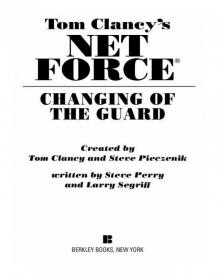 Changing of the Guard
Changing of the Guard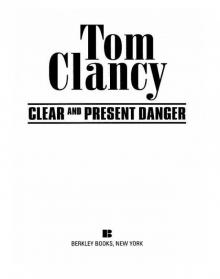 Clear and Present Danger
Clear and Present Danger Hounds of Rome
Hounds of Rome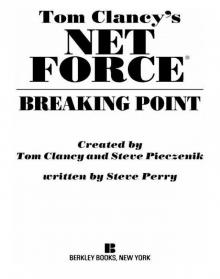 Breaking Point
Breaking Point Tom Clancy's Jack Ryan Books 7-12
Tom Clancy's Jack Ryan Books 7-12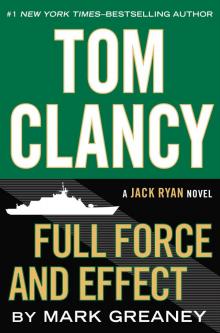 Full Force and Effect
Full Force and Effect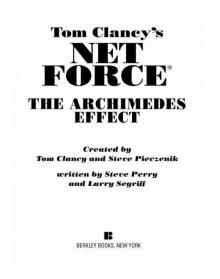 The Archimedes Effect
The Archimedes Effect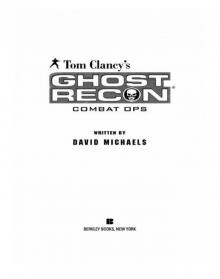 Combat Ops
Combat Ops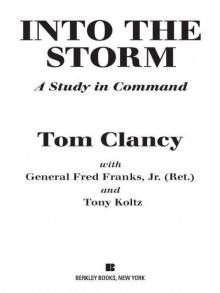 Into the Storm: On the Ground in Iraq
Into the Storm: On the Ground in Iraq Under Fire
Under Fire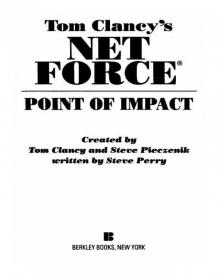 Point of Impact
Point of Impact Red Rabbit
Red Rabbit Rainbow Six
Rainbow Six The Hunt for Red October
The Hunt for Red October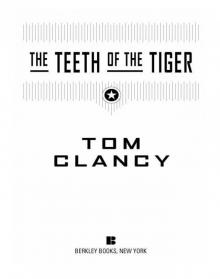 The Teeth of the Tiger
The Teeth of the Tiger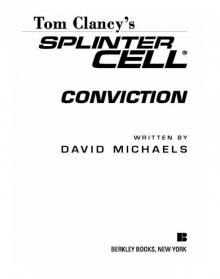 Conviction (2009)
Conviction (2009)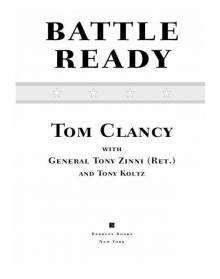 Battle Ready
Battle Ready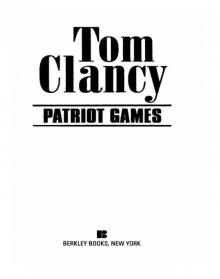 Patriot Games
Patriot Games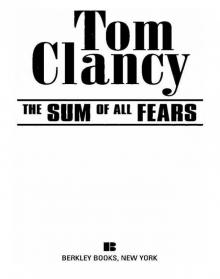 The Sum of All Fears
The Sum of All Fears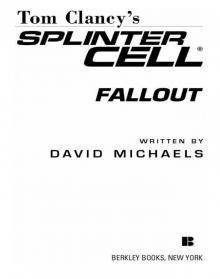 Fallout (2007)
Fallout (2007)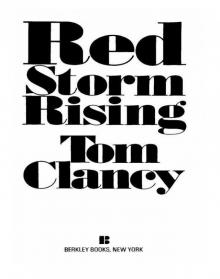 Red Storm Rising
Red Storm Rising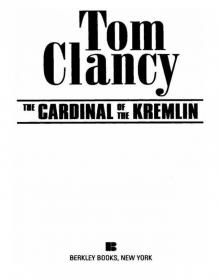 The Cardinal of the Kremlin
The Cardinal of the Kremlin Executive Orders
Executive Orders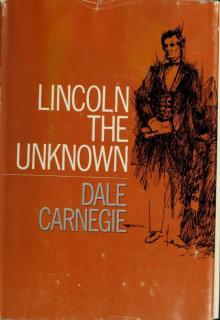 Lincoln, the unknown
Lincoln, the unknown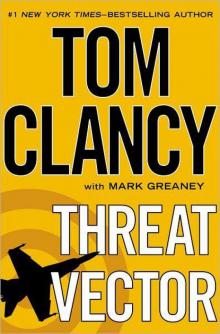 Threat Vector
Threat Vector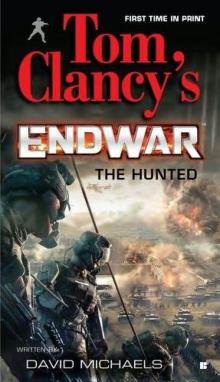 The Hunted
The Hunted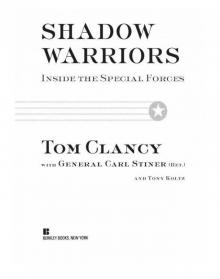 Shadow Warriors: Inside the Special Forces
Shadow Warriors: Inside the Special Forces End Game
End Game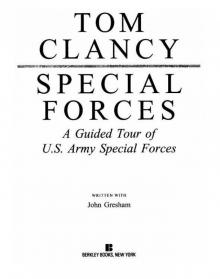 Special Forces: A Guided Tour of U.S. Army Special Forces
Special Forces: A Guided Tour of U.S. Army Special Forces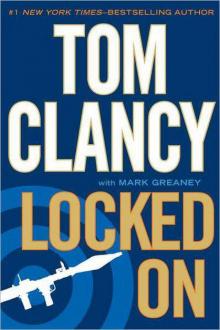 Locked On
Locked On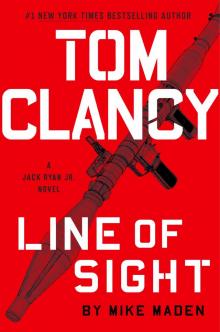 Line of Sight
Line of Sight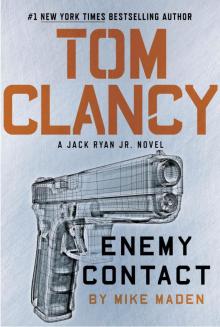 Tom Clancy Enemy Contact - Mike Maden
Tom Clancy Enemy Contact - Mike Maden Fighter Wing: A Guided Tour of an Air Force Combat Wing
Fighter Wing: A Guided Tour of an Air Force Combat Wing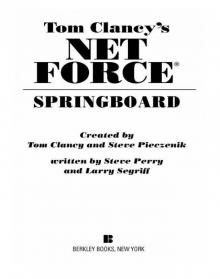 Springboard
Springboard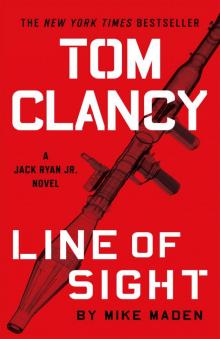 Line of Sight - Mike Maden
Line of Sight - Mike Maden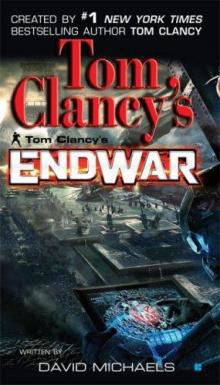 EndWar
EndWar Dead or Alive
Dead or Alive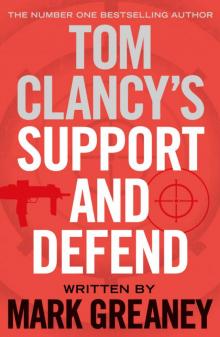 Tom Clancy Support and Defend
Tom Clancy Support and Defend Checkmate
Checkmate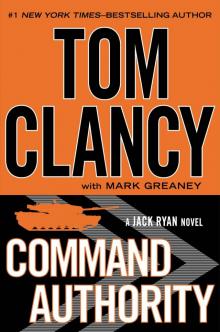 Command Authority
Command Authority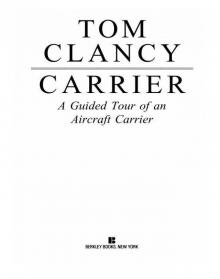 Carrier: A Guided Tour of an Aircraft Carrier
Carrier: A Guided Tour of an Aircraft Carrier Blacklist Aftermath
Blacklist Aftermath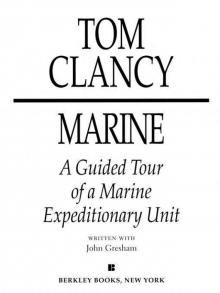 Marine: A Guided Tour of a Marine Expeditionary Unit
Marine: A Guided Tour of a Marine Expeditionary Unit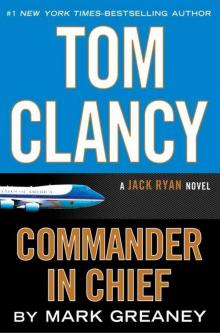 Commander-In-Chief
Commander-In-Chief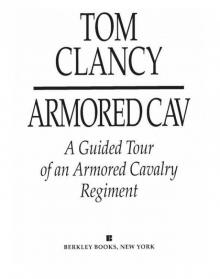 Armored Cav: A Guided Tour of an Armored Cavalry Regiment
Armored Cav: A Guided Tour of an Armored Cavalry Regiment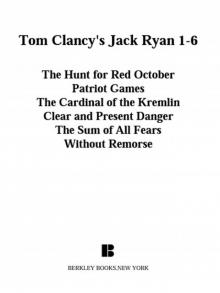 Tom Clancy's Jack Ryan Books 1-6
Tom Clancy's Jack Ryan Books 1-6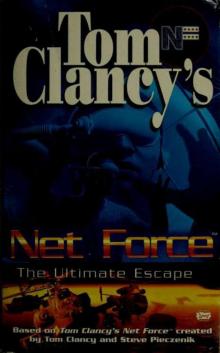 The Ultimate Escape
The Ultimate Escape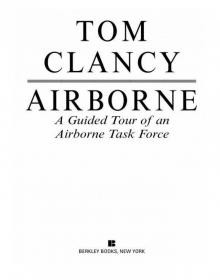 Airborne: A Guided Tour of an Airborne Task Force
Airborne: A Guided Tour of an Airborne Task Force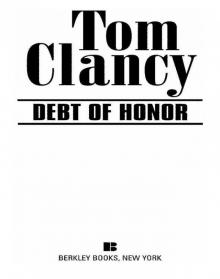 Debt of Honor
Debt of Honor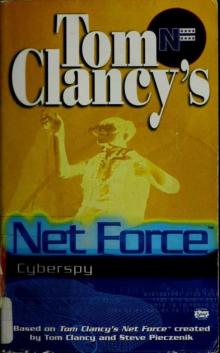 Cyberspy
Cyberspy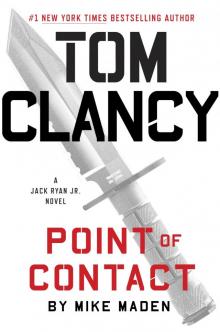 Point of Contact
Point of Contact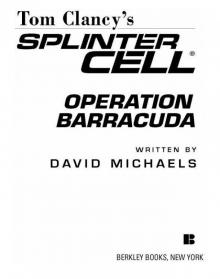 Operation Barracuda (2005)
Operation Barracuda (2005)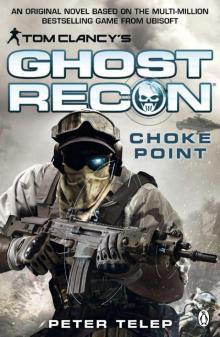 Choke Point
Choke Point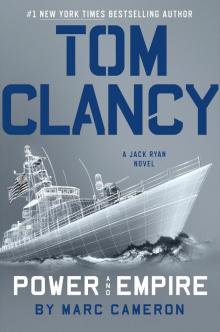 Power and Empire
Power and Empire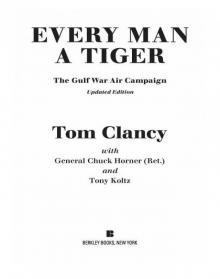 Every Man a Tiger: The Gulf War Air Campaign
Every Man a Tiger: The Gulf War Air Campaign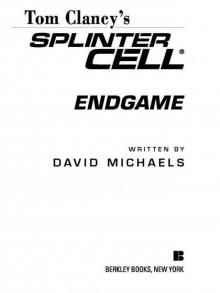 Endgame (1998)
Endgame (1998)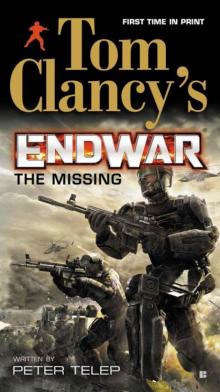 EndWar: The Missing
EndWar: The Missing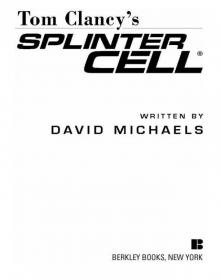 Splinter Cell (2004)
Splinter Cell (2004)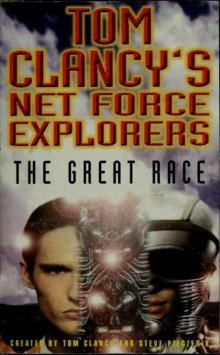 The Great Race
The Great Race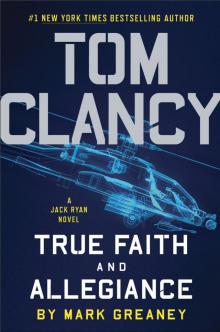 True Faith and Allegiance
True Faith and Allegiance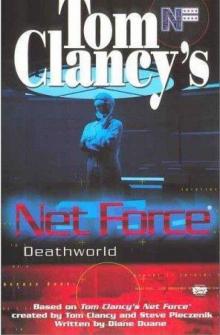 Deathworld
Deathworld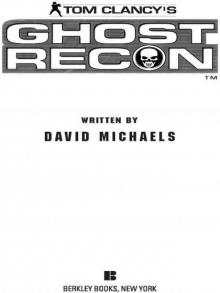 Ghost Recon (2008)
Ghost Recon (2008)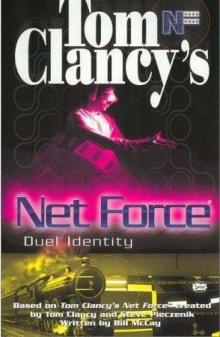 Duel Identity
Duel Identity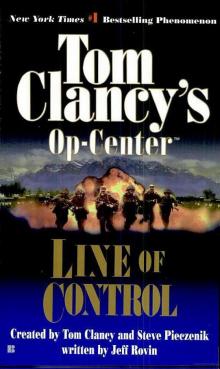 Line of Control o-8
Line of Control o-8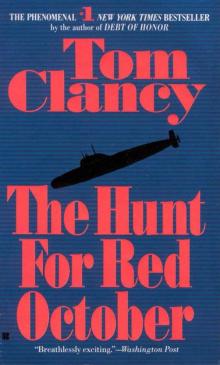 The Hunt for Red October jr-3
The Hunt for Red October jr-3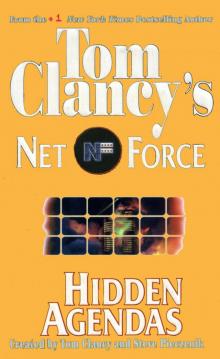 Hidden Agendas nf-2
Hidden Agendas nf-2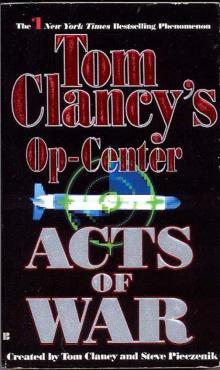 Acts of War oc-4
Acts of War oc-4 Ruthless.Com pp-2
Ruthless.Com pp-2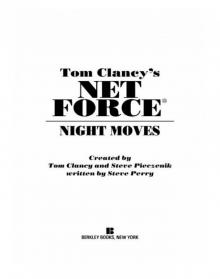 Night Moves
Night Moves The Hounds of Rome - Mystery of a Fugitive Priest
The Hounds of Rome - Mystery of a Fugitive Priest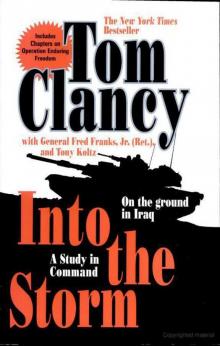 Into the Storm: On the Ground in Iraq sic-1
Into the Storm: On the Ground in Iraq sic-1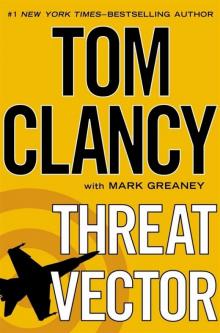 Threat Vector jrj-4
Threat Vector jrj-4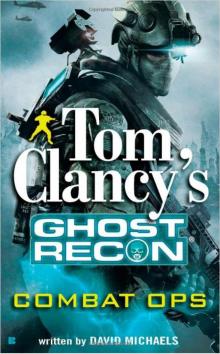 Combat Ops gr-2
Combat Ops gr-2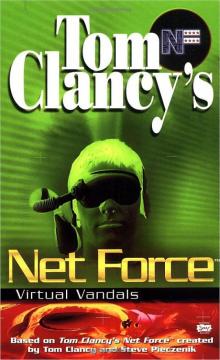 Virtual Vandals nfe-1
Virtual Vandals nfe-1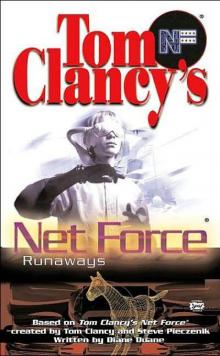 Runaways nfe-16
Runaways nfe-16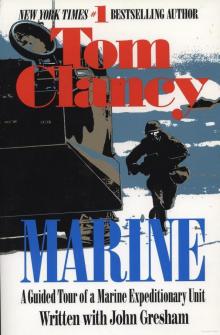 Marine: A Guided Tour of a Marine Expeditionary Unit tcml-4
Marine: A Guided Tour of a Marine Expeditionary Unit tcml-4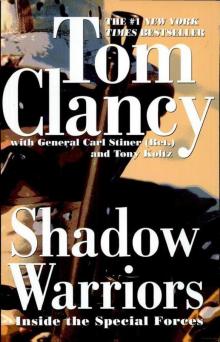 Shadow Warriors: Inside the Special Forces sic-3
Shadow Warriors: Inside the Special Forces sic-3 Jack Ryan Books 1-6
Jack Ryan Books 1-6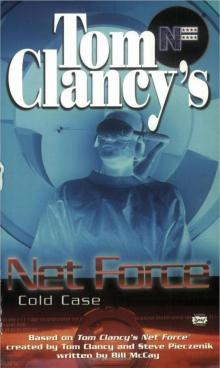 Cold Case nfe-15
Cold Case nfe-15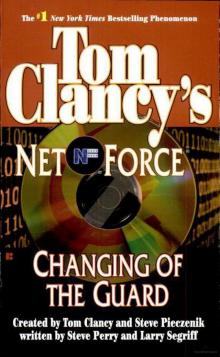 Changing of the Guard nf-8
Changing of the Guard nf-8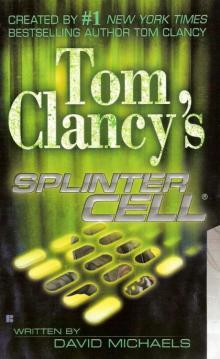 Splinter Cell sc-1
Splinter Cell sc-1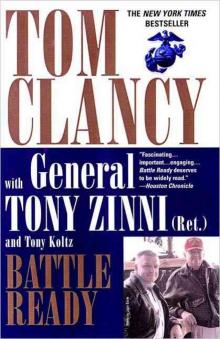 Battle Ready sic-4
Battle Ready sic-4 The Bear and the Dragon jrao-11
The Bear and the Dragon jrao-11 Fighter Wing: A Guided Tour of an Air Force Combat Wing tcml-3
Fighter Wing: A Guided Tour of an Air Force Combat Wing tcml-3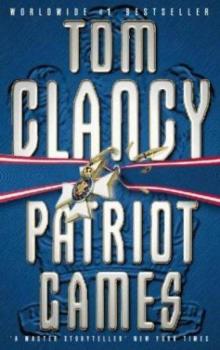 Patriot Games jr-1
Patriot Games jr-1 Jack Ryan Books 7-12
Jack Ryan Books 7-12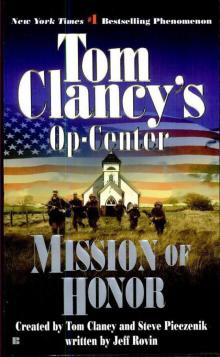 Mission of Honor o-9
Mission of Honor o-9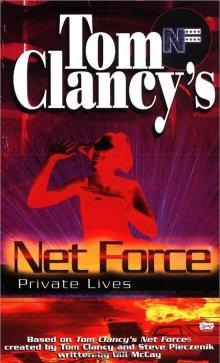 Private Lives nfe-9
Private Lives nfe-9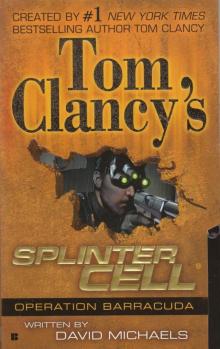 Operation Barracuda sc-2
Operation Barracuda sc-2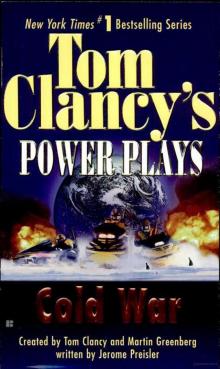 Cold War pp-5
Cold War pp-5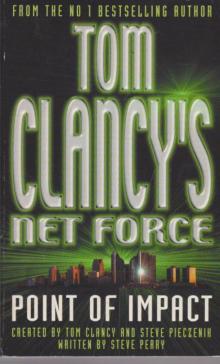 Point of Impact nf-5
Point of Impact nf-5 Red Rabbit jr-9
Red Rabbit jr-9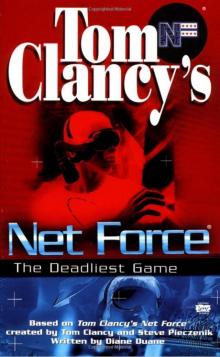 The Deadliest Game nfe-2
The Deadliest Game nfe-2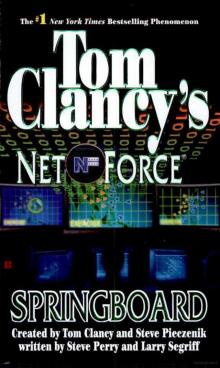 Springboard nf-9
Springboard nf-9 Safe House nfe-10
Safe House nfe-10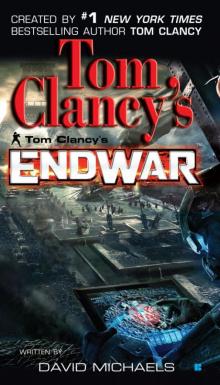 EndWar e-1
EndWar e-1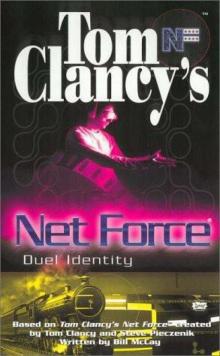 Duel Identity nfe-12
Duel Identity nfe-12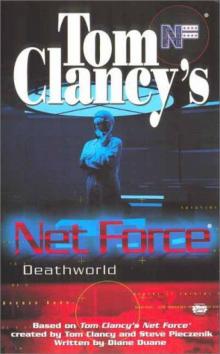 Deathworld nfe-13
Deathworld nfe-13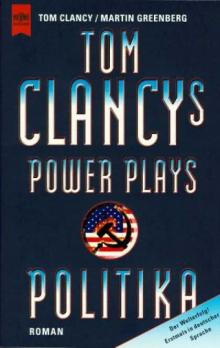 Politika pp-1
Politika pp-1 Rainbow Six jr-9
Rainbow Six jr-9 Tom Clancy's Power Plays 1 - 4
Tom Clancy's Power Plays 1 - 4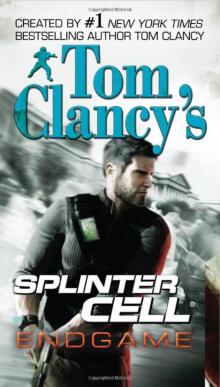 Endgame sc-6
Endgame sc-6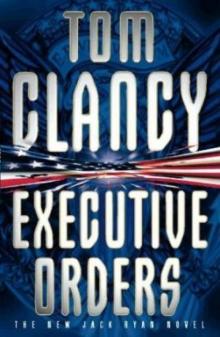 Executive Orders jr-7
Executive Orders jr-7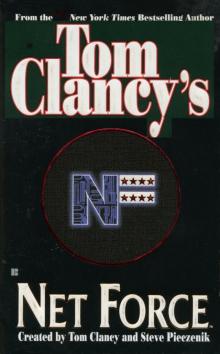 Net Force nf-1
Net Force nf-1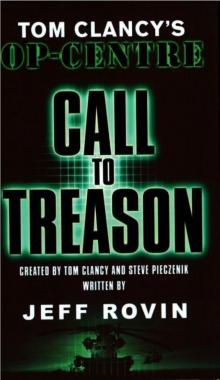 Call to Treason o-11
Call to Treason o-11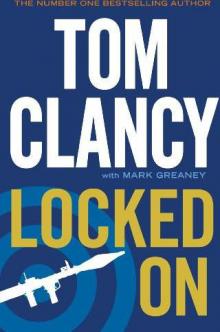 Locked On jrj-3
Locked On jrj-3 Against All Enemies
Against All Enemies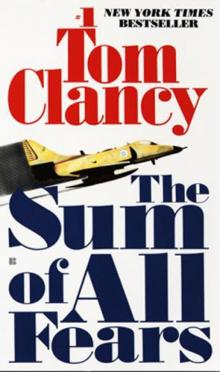 The Sum of All Fears jr-7
The Sum of All Fears jr-7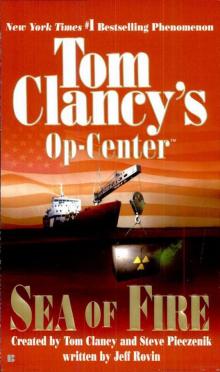 Sea of Fire o-10
Sea of Fire o-10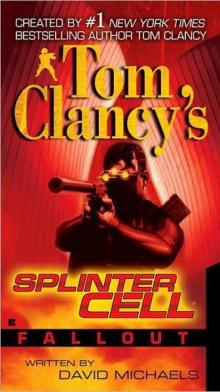 Fallout sc-4
Fallout sc-4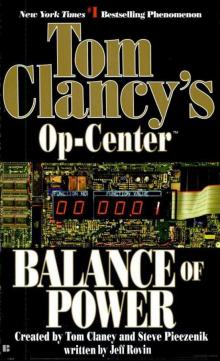 Balance of Power o-5
Balance of Power o-5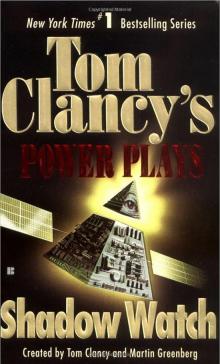 Shadow Watch pp-3
Shadow Watch pp-3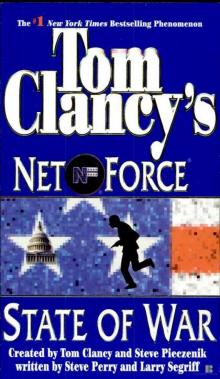 State of War nf-7
State of War nf-7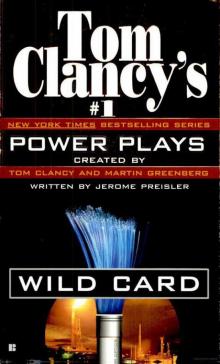 Wild Card pp-8
Wild Card pp-8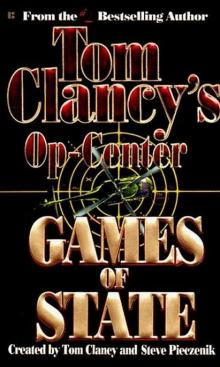 Games of State o-3
Games of State o-3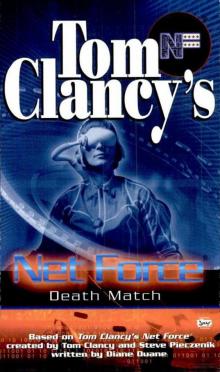 Death Match nfe-18
Death Match nfe-18 Against All Enemies mm-1
Against All Enemies mm-1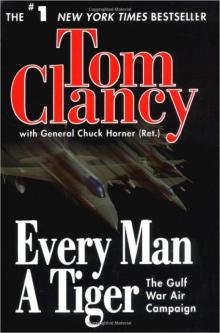 Every Man a Tiger: The Gulf War Air Campaign sic-2
Every Man a Tiger: The Gulf War Air Campaign sic-2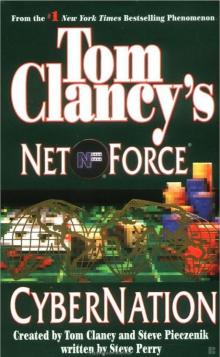 Cybernation nf-6
Cybernation nf-6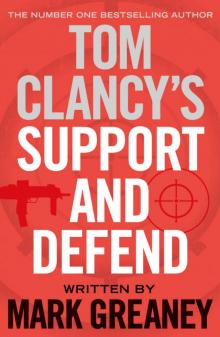 Support and Defend
Support and Defend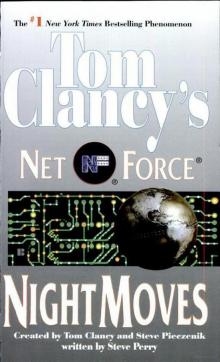 Night Moves nf-3
Night Moves nf-3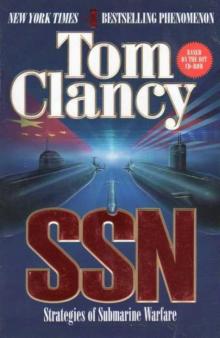 SSN
SSN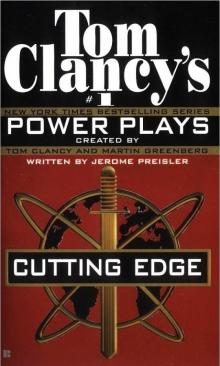 Cutting Edge pp-6
Cutting Edge pp-6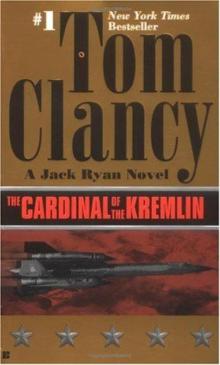 The Cardinal of the Kremlin jrao-5
The Cardinal of the Kremlin jrao-5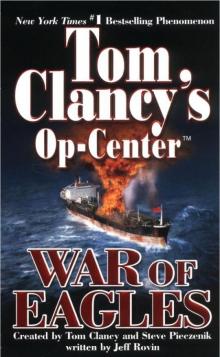 War of Eagles o-12
War of Eagles o-12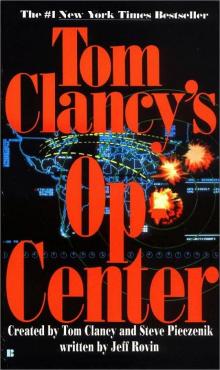 Op-Center o-1
Op-Center o-1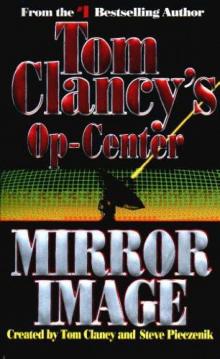 Mirror Image o-2
Mirror Image o-2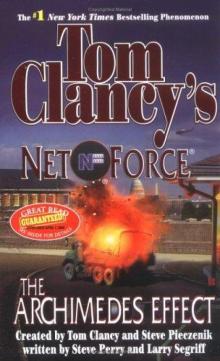 The Archimedes Effect nf-10
The Archimedes Effect nf-10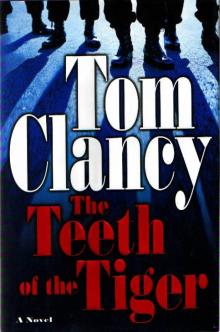 Teeth of the Tiger jrj-1
Teeth of the Tiger jrj-1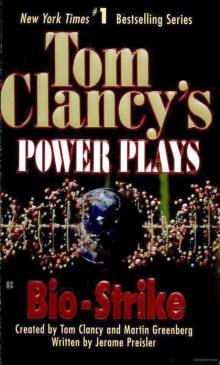 Bio-Strike pp-4
Bio-Strike pp-4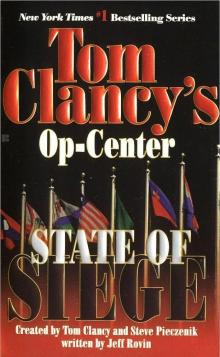 State of Siege o-6
State of Siege o-6 Debt of Honor jr-6
Debt of Honor jr-6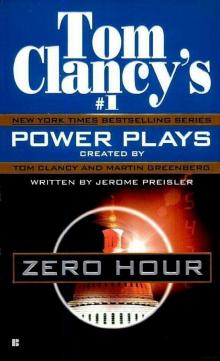 Zero Hour pp-7
Zero Hour pp-7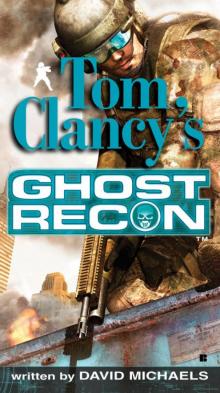 Ghost Recon gr-1
Ghost Recon gr-1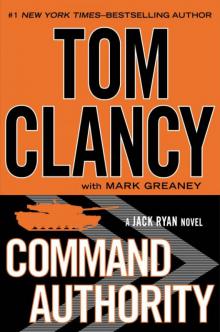 Command Authority jr-10
Command Authority jr-10 Tom Clancy's Power Plays 5 - 8
Tom Clancy's Power Plays 5 - 8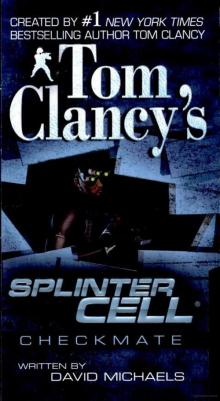 Checkmate sc-3
Checkmate sc-3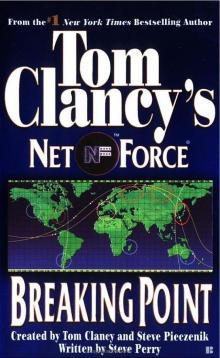 Breaking Point nf-4
Breaking Point nf-4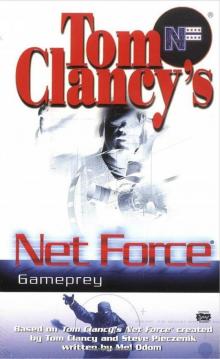 Gameprey nfe-11
Gameprey nfe-11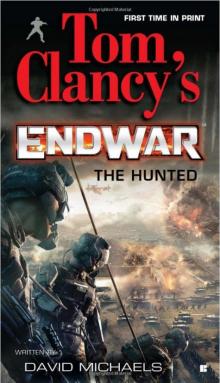 The Hunted e-2
The Hunted e-2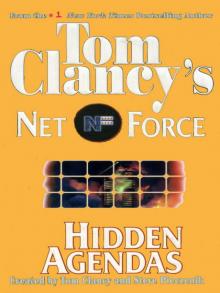 Hidden Agendas
Hidden Agendas Divide and Conquer o-7
Divide and Conquer o-7